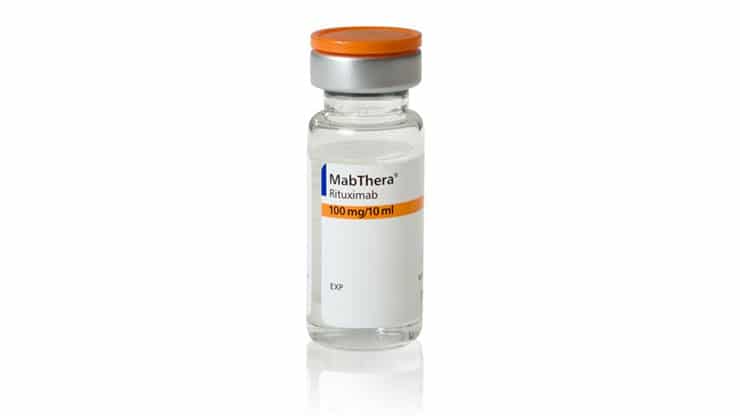
The 4 Roche patents involved in the interlocutory motion are all method of treatment patents (MOT) relating to the use of Roche’s rituximab (MabThera). Sandoz is now prevented from launching its biosimilar rituximab until the expiry of the first MOT patent in suit AU2008207357 (NHL; RmAb + CVP) on 11 August 2019. It remains to be seen what will happen thereafter. MOTs covering additional patented indications are in force and will expire as follows: CLL (RmAb + chemo) 9 November 2019 (AU761844); DLBCL (RmAb + CHOP) 2 August 2020 (AU2005211669); and RA 6 April 2024 (AU2007242919).
Roche requested a blanket injunction until expiry of the last relevant MOT patent, 6 April 2024 (or earlier first instance decision). Sandoz requested a “step-down” injunction which would have allowed Sandoz to enter the market for each non-infringing use, as soon as each associated MOT patent expires. Instead of providing the “step down” injunction requested by Sandoz, the Court granted the blanket style injunction requested by Roche, but only until the expiry of the first MOT patent in suit (ie until what would have been the first “step down” date). Justice Burley said (paragraph 233):
“I am not satisfied that it is appropriate to permit such orders to extend beyond expiry of the NHL patent, which event could materially alter the landscape of the balance of convenience and justice. Nor do I consider it productive to speculate as to the circumstances that may prevail as at that date. No doubt the parties will work to ensure that a hearing has been or will imminently be conducted by then…..”
Rather than a deliberate attempt to avoid the substantive issue, this is clearly a “hurry on” from the Court, as the parties will now be very focused on obtaining a substantive first instance decision as quickly as possible, ideally before 11 August 2019.
The Court side-stepped the question of whether an injunction operating as a blanket prohibition on sale (which would give an MOT patent the power of a compound patent) would be equitable where there are significant non-infringing uses. During the interlocutory hearing on 15 and 16 May, the size of the market for each indication was stated as:
- Current, off label (non-infringing) use: 8%
- NHL: 47%
- CLL: 7%
- DLBCL: 29%
- RA: 9%
By granting a blanket injunction in circumstances where it was agreed that 92% of the market is covered by the patents in suit (ie prior to 11 Aug 2019), the Court ignored the 8% of the market which is (on the allegations and patents before it) non-infringing. But in refusing to extend that injunction beyond 11 August 2019, the Court refused (for now) to have a blanket injunction in place where 55% (8% + 47%) of the market is non-infringing.
Questions relating to whether injunctions on MOTs should or could provide a blanket prohibition on sale are as old as the generics industry, but have only ripened
with the recent biosimilars boom. Biosimilars are heavily patented, and the first wave of biosimilar products globally are being launched toward the tail end of patent life, where the patent focus is MOTs, and most compound/formulation patents have expired. Where the only patents in force are MOTs, and where there are multiple MOTs in play, the Courts will being forced to re-think how injunctions should operate. In many ways, the Roche v Sandoz matter was the perfect test case, but the Court has side-stepped the issue for now. However, the issue remains, and will require resolution, in this case or the next.
Roche commenced proceedings against Sandoz on 21 Dec 2017, less than a month after Sandoz obtained ARTG approval for Riximyo in Australia. Celltrion also obtained ARTG approval for its biosimilar rituximab (Truxima) on 14 Apr 2018. Roche has not commenced any proceedings against Celltrion at this stage, perhaps because Celltrion does not have an Australian presence nor an AU launch partner for this product.
The written orders can be found here, and the decision here.

Naomi Pearce
CEO, Executive Lawyer (AU, NZ), Patent Attorney (AU, NZ) & Trade Mark Attorney (AU)
Naomi is the founder of Pearce IP, and is one of Australia’s leading IP practitioners. Naomi is a market leading, strategic, commercially astute, patent lawyer, patent attorney and trade mark attorney, with over 25 years’ experience, and a background in molecular biology/biochemistry. Ranked in virtually every notable legal directory, highly regarded by peers and clients, with a background in molecular biology, Naomi is renown for her successful and elegant IP/legal strategies.
Among other awards, Naomi is ranked in Chambers, IAM Patent 1000, IAM Strategy 300, is a MIP “Patent Star”, and is recognised as a WIPR Leader for patents and trade marks. Naomi is the 2023 Lawyers Weekly “IP Partner of the Year”, the 2022 Lexology client choice award recipient for Life Sciences, the 2022 Asia Pacific Women in Business Law “Patent Lawyer of the Year” and the 2021 Lawyers Weekly Women in Law SME “Partner of the Year”. Naomi is the founder of Pearce IP, which commenced in 2017 and won 2021 “IP Team of the Year” at the Australian Law Awards.
